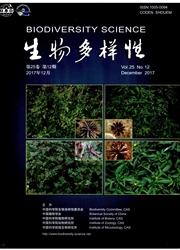

 中文摘要:
中文摘要:
Rapoport法则最初是关于物种分布的纬度位置与纬度分布宽度的关系的假说,被认为是宏观生态学的重要假说之一。Rapoport法则提出以后引发了广泛的实证检验和理论探讨,并扩展到海拔和海洋深度梯度的分析。对Rapoport法则的检验发展了多种算法,包括基于中域效应模型的比较分析法,提出了气候变异性等多种机理解释,并建立了物种分布区范围格局与物种丰富度格局、分布边界限制等重要宏观生态学现象之间的联系。关于该法则的普适性仍存在明显的意见分歧,但分析和检验方法被认为是影响结果的重要因素,方法的改进将是这一领域今后研究的关键。本文主要从Rapoport法则的概念、检验方法、机理性解释,关于其普适性的争论及其与物种丰富度格局的关系等方面,综述这一领域的研究进展。
 英文摘要:
英文摘要:
Rapoport's rule is a hypothesis about the relationship between species latitudinal locations and their latitudinal range widths. By stimulating a wide range of empirical tests and theoretical discussions, Rapoport's rule has been recognized as one of a few crucial hypotheses in macroecology, and has been extended to distributional patterns across gradients in elevation and ocean depth. A variety of algorithms have been applied to test the rule, and several interpretations, in addition to climatic variability, have been proposed as underlying mechanisms. Studies have also bridged the Rapoport's effect with other important biogeographic phenomenon, e.g. species richness pattern, species-area relationship, and boundary limit to distribution. However, the universality of Rapoport's rule is still debatable, and tests of the rule are greatly affected by data collection and analysis methodology. Hence, methodological improvements are key to settling the debate on the rule. Our objectives are to provide an overview on Rapoport's rule, including conceptual changes, changes in methodology and mechanistic interpretations, the debate on the universality of the rule, and the relationship between Rapoport's rule and latitudinal/altitudinal patterns of species richness.
 同期刊论文项目
同期刊论文项目
 同项目期刊论文
同项目期刊论文
 Topographic effects on the distribution and composition of soil seed bank in mountain forests: Impli
Topographic effects on the distribution and composition of soil seed bank in mountain forests: Impli 期刊信息
期刊信息
